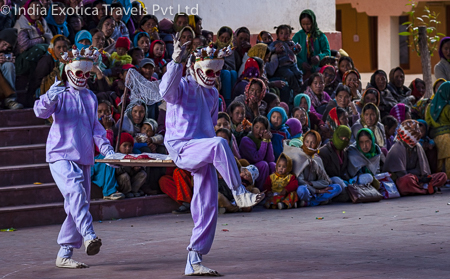
Tucked away in the far north-east of India, wedged between the borders of Bhutan, Burma and Tibet, Arunachal Pradesh is India 's newest and least-known state. Before the region was elevated to statehood in 1986, Arunachal Pradesh, along with Assam, Nagaland and 4 other states was known as the North-East Frontier Agency (NEFA). Excerpt for occasional forays by administrators and anthropologists during the time of the British, nothing much was known about this area for most of the 20th century. The isolation of the North East Frontier Agency was legally safeguarded by India's own government; before laws permitting limited tourism were passed in 1995, even Indian citizens were not allowed to visit.
The North East Frontier Agency lands never belonged to ancient India. They were, and still are, peopled by Mongoloid and Mon-Khmer austere stock, far removed from Aryan-Dravidian blood of the mainstream. The people here are animists (except the area of Tawang where they accepted Buddhism); in the Highlands, wild Burmese tribes enthusiastically practiced indiscriminate headhunting until as late as the fifties. To the north, Mongoloid tribals, bare-bodied in breech-clouts, are today still encountering “civilization".
Nagaland is almost entirely inhabited by 16 groups of Tibeto-Burmese tribes. Among them are Angamis, Aos, Konyaks, Kukis, Lothas, Semas and Wanchus.
The Nagas, who were once head hunters, have been known for their fierceness and the regular raids they made on Assam and Burma. The warring tribes believed that since the enemy’s animated soul, waha, was to be found at the nape of the neck, it could only be set free once beheaded. However, since the spritual soul, mio, resided in the head and brought good fortune, enemy heads (and those of dead comrades) were prized as they could add to a community’s own store of dead ancestors.
The hilltop villages are protected by stone walls. The morung, a meeting house, acts as a boy’s dormitory, and is used for storing weapons and once displayed the prizes of war i.e. the enemy heads. The huge sacred drum, which stands by each morung is hallowed out tree trunk carved to resemble a buffalo head.
The Bori Boot festival is performed by the Hill-Miris. The festival usually falls in February. Bori Boot means to get together irrespective of age, sex, caste to hail the spring and successful harvest. The festival also invokes the spirit of Bori Boot to bless them with prosperity and free from diseases of any kind. The festival is performed collectively. The young members do all the work under the elders guidance. The Nibu (priest) performs Puja as well as conduct sacrifice. 'Etting' is co piously applied on one and all. The festival is of three days duration.










